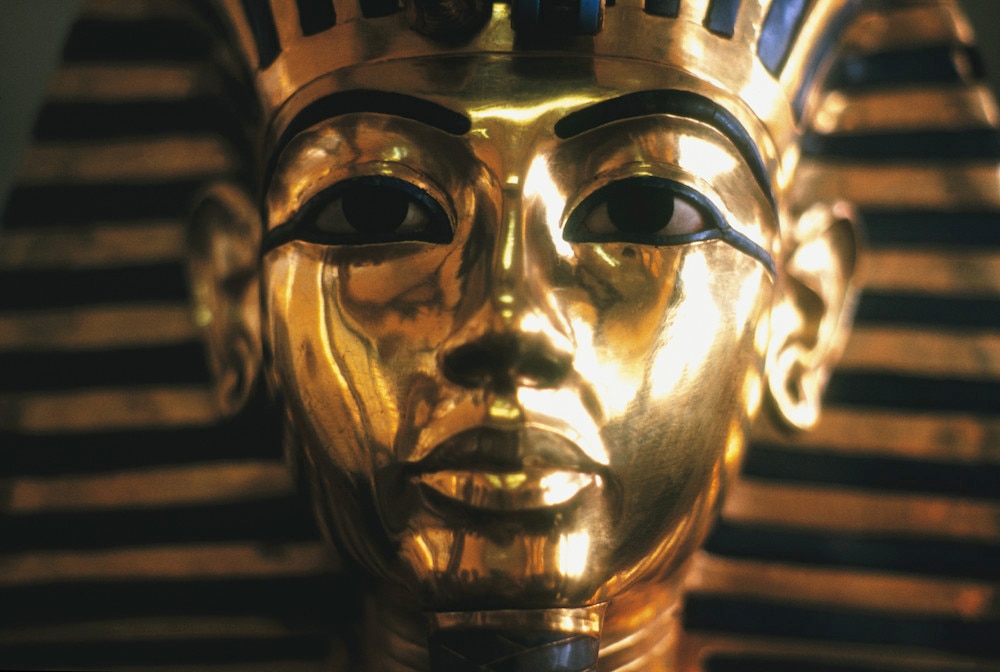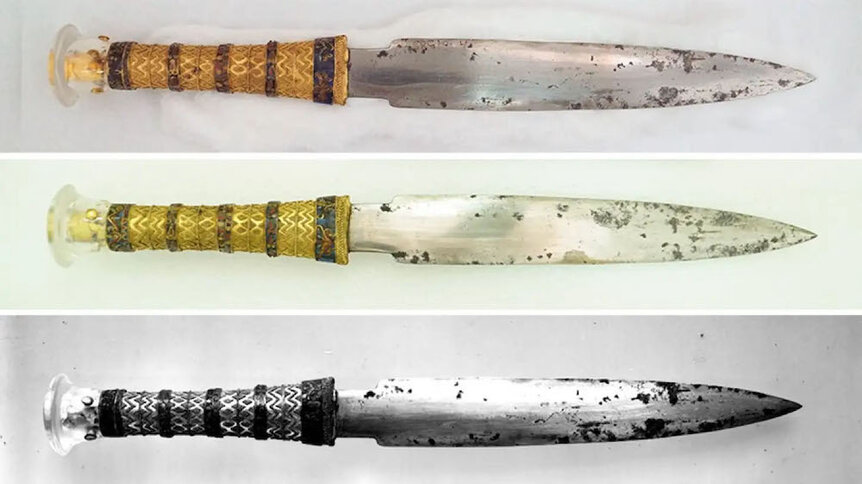Create a free profile to get unlimited access to exclusive videos, sweepstakes, and more!
King Tut's meteorite dagger unsheathes more mysteries
It came from outer space, but it didn't land in Egypt.

When archaeologists first glimpsed the gilded splendor of King Tutankhamun’s tomb, they never thought that one of the most fascinating artifacts didn’t originate in Egypt — or on Earth.
Tutankhamun ascended the throne at 9 and died at 19. While he may not have reigned long, he did wield an iron dagger that was (in the most literal sense) out of this world. It might have not looked like much compared to all the riches unearthed from his tomb, including a gold death mask that seems to gaze into the hereafter, but the blade of this dagger was actually carved from a meteorite that had previously fallen to Earth. The question is where that dagger was forged.
Never mind the origin of the asteroid that burned up in the atmosphere and sent a meteorite hurtling to Earth. Where the dagger itself came from is debatable, but the type of space rock it was made from might have now revealed something. Researcher Tomoko Arai of the Chiba Institute of Technology in Japan looked up close to find out what type of meteorite was used for such a weapon. She coauthored a study recently published in Meteoritics and Planetary Science.
“The era of King Tutankhamun was around 1300 BC, during the late Bronze Age,” she told SYFY WIRE “It is widely believed that the subsequent Iron Age started around 1200 BC. That is when the presence of the Tut iron dagger have raised doubt.”
This and other pre-Iron Age artifacts made of iron suggest the metal was obtained from meteorites before there was a surge in smelting and steel production. It had a pattern that could have only been from an octahedrite. Octahedrites are actually the most common iron meteorites, and what gives them away is known as a Widmanstätten pattern, formed by lines of kamacite (an iron-nickel alloy) that intersect. This was previously unknown because a Widmanstätten pattern is impossible to see without a microscope. It showed up after the dagger was zapped with X-rays to give the researchers a better idea of what it was made of.
Another sign of an octahedrite is embedded flecks of iron sulfide. They were almost mistaken for rust. The metal in the boy king’s dagger is also the same kind as that from the Japanese meteorite Shiragahi, from which several royal swords are known to have been made. That doesn’t necessarily mean that the blade or its raw material came all the way from Japan. What it does mean is that, because Shiragahi is an octahedrite, there is something to compare the dagger to. How it was forged also became apparent because the Widmanstätten pattern was still visible.
“This structure consists of Ni-poor Fe metal (kamacite) and Ni-rich Fe metal (taenite)," said Arai. “General forging temperature of steel is above 1,742° F. The dagger was generated by low to moderate temp forging, so the Widmanstätten structure survived during its manufacture.”
Where that meteorite landed and where the dagger was made is unknown. However, the Amarna Letters might be whispering about it from the past. These 3,400-year-old tablets kept records of diplomatic matters and are from around the time Tutankhamun was pharaoh. Something is mentioned about an iron dagger being given to his grandfather, Amenhotep III, who married the daughter of the Anatolian king of Mitanni. It is possible that it was a wedding present that was passed down as an heirloom until it was finally buried with Tutankhamun.
“The hypothesis of the dagger being foreign is consistent with the Amarna letters,” Arai said. “We find the plaster used for the gold hilt was also what was not used in the ancient Egypt during that era. We think this is also in line with a foreign origin.”
King Tut’s mummy was also found with an iron bracelet and headrest. Apologies to this guy, but that still doesn’t mean his bloodline had extraterrestrial origins.



























